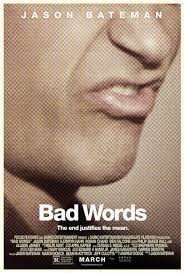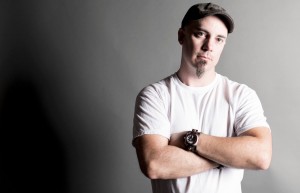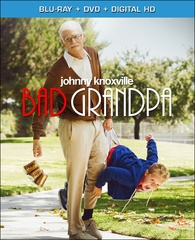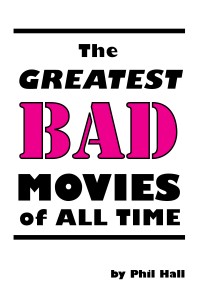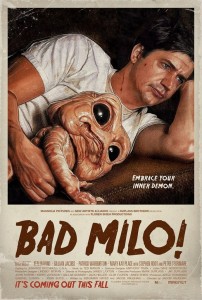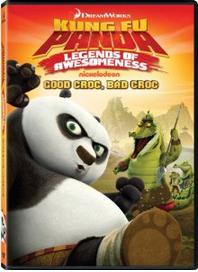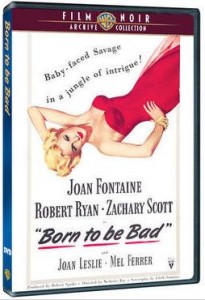Scott Frazelle co-produced and co-wrote December’s House of Bad. Media Mikes had a chance to catch up with the multi-tasker to get the low-down on one of the most buzzed about horror films on the net. Be sure to check out “House of Bad” when it hits DVD on December 3.
Mike Gencarelli: What exactly does a co-producer do?
Scott Frazelle: In my experience, that title is given to an individual that not only has a specific job, but also brings something to the table in the form of resources or creativity, or both. In the case of House of Bad, our Director, Jim Towns, Producer Dorota Skrzypek, and myself all shared an equal part of producing this feature. Jim brought the script, and a location already in mind. I secured resources and began planning logistics. Dorota found capitol. We equally hammered out the creative details to make it work on screen, and we did the same through the process of post-production. There are plenty of examples where one individual took the lead, but it is absolutely accurate to say we shared this task equally.
MG: How hands-on were you? Was it a case of being on set, doing whatever needed to be done there and then, or was it more a case of making sure the ducks were all in a row before Jim started shooting the movie?
SF: It worked out that Jim asked me to get involved right at a moment where I was between projects for a short time. I was able to do a few weeks of solid prep, then we were off and running. Things were organized pretty well. I stayed on set and was Line Producer through the shoot, as well as another pair of hands wherever needed. I’ve worked in many capacities on Indie features, so its hard for me not to be involved while on set. Plus, I love the culture of being on set. Its amazing to watch complete strangers come together and step into this circus that is filmmaking.
MG: What’s the biggest difficultly doing an indy film?
SF: Overcoming the urge to let enthusiasm overpower good judgement. A lot of Indie projects are a labor of love or a great idea that hasn’t reached the right channels to properly realize them. As a result, the movie suffers, and the people involved suffer. There’s a saying that goes around town, “If you don’t have enough money… you don’t have the right script.” Often times that’s thrown at small projects that are trying make ends meet as a criticism, but really, it should be a mantra that helps guide your judgement. Its not easy, sometimes, to get your start or see your project come to life, but you have to pick your projects in a way that best honors the quality of the project. If you’ve done a budget several times, and you know you really need $250K, it’s going to get rough when you raise only half of that, and decided to do it anyway. Asking people to work 16 hour days for an entire week “for the sake of the movie” is garbage, damaging, and insulting. You can’t do that if you want to work with people again, and you certainly can’t do that if you want what’s on screen to be right. I’m a firm believer in quality, and it begins with EVERYTHING. The script you write or choose, the people you hire, how you treat them, it all has to be guided by doing it right. The best decision you can make could be to NOT proceed with a project…until you’re prepared.
MG: You’re actually a bit of a horror veteran. I see you were in “Creepshow III”! Where and when did the love affair with fright-films begin?
SF: Like all good American kids of the time, through television! I fell in love with classic, and b-movie horror films, at an early age. I remember being fascinated watching The Creature from the Black Lagoon around age 6, followed quickly by Tarantula, Them, The Blob, and re-run after re-run of The Twilight Zone. My father has an affinity for those works, so I was able to catch them on TV with him. Those kinds of horror films really had a fantastic quality to them, they were able to make an impression on me much better than say, Casablanca, would have at that age. I think I saw Whatever Happened to Baby Jane and Psycho when I was about 10, and I no longer needed a monster suit to hold my attention, those were the films that made me realize people are the monsters in our world. My involvement with Creepshow3 was in many ways a dream come true, I got a chance to be a part of the legacy of one of my most favorite movies.
MG: Did the script go through many drafts?
SF: I don’t know how many rewrites Jim went through before he decided to show it to me, but when we both agreed to move forward on it together, there wasn’t the need for a lot of work. I wanted to make some changes, but mostly in the nuances. I thought Jim had some great little moments still lurking in his script, and that the movie would be better served by dragging those things into the light. Jim and I worked together to do that, and it didn’t take much time before we both felt it was done.
MG: When you sold the film to the distributor, were you forced to make any changes – either in the title, how the film was marketed, or otherwise. Was it like handing over a baby to a stranger and just hoping it’d be Okay?
SF: It was! We had been handling everything about the movie from day one-including PR, and generating reviews, and all the stuff it takes to get a distributor interested; so when we made a deal with Osiris Entertainment, there was the relief of not having to do all that any more. At the same time, it was the beginning of a whole new kind of stress because, you know, there goes our baby. But one of the biggest factors in accepting the offer from Osiris was that they genuinely liked the film, and didn’t feel there was a need to change anything about it. Jim, Dorota and myself, all agreed that we’d get the best support from a company that appreciated and enjoyed what we had created, so when they did decided to change the DVD cover, we felt their reasoning was sound and continued to put us in the best position possible.
MG: Was it always called House of Bad? or did you have some alternative titles at one stage?
SF: It’s always been House of Bad. I liked the title when I first read it, I thought there was something just a little spooky about it. It never made me think of a slasher film, or torture porn, or anything like that. There was something unsettling about it, in just the right way. Our cast and crew were one of the best little production families ever, we got along, and there was a lot of fun riffing on the title throughout the production, but nobody ever came up with anything that fit better. Once we began, and started talking about it with friends, everyone seemed to react the same way. The planned sequels, however…
MG: You’re also a book editor. Can you tell us a little bit about that?
SF: My formal education is in writing, and one of my gifts, I believe, is the ability to help a fellow writer improve or refine their ideas. This is different from Punch-Up, where you’re hired to take a script and actually rewrite portions of it to meet certain needs; I feel like when I read another writer’s work, I can see their story through it’s flaws, the most common of which is keeping a particular voice, and pacing. I don’t like to put my words into other people’s work, but I can help another writer see where they’ve gotten off course, or change things to keep to the spirit of their story. Its a little like being a coach; sometimes, because you’re the not the one swinging the bat, or club, or whatever, you can see where a tiny adjustment harnesses the all the power. The first time I’ve officially been named Editor was in 2008, when Dorota began her women’s fiction series Sex, Life, and Hannah. She had this idea for a dating series set in Los Angeles. It was high-energy, and magnetic, and the characters were all very real, but it was still evolving. I’ve been attached to that project for three books now, with a fourth on the way, and it’s been great. I’m also serving as editor on her erotic thriller, The Need, which is going to blow people’s minds (and which I really hope gets realized as a feature)! Its great to work in that creative capacity, being there to help things click.
Related Content


